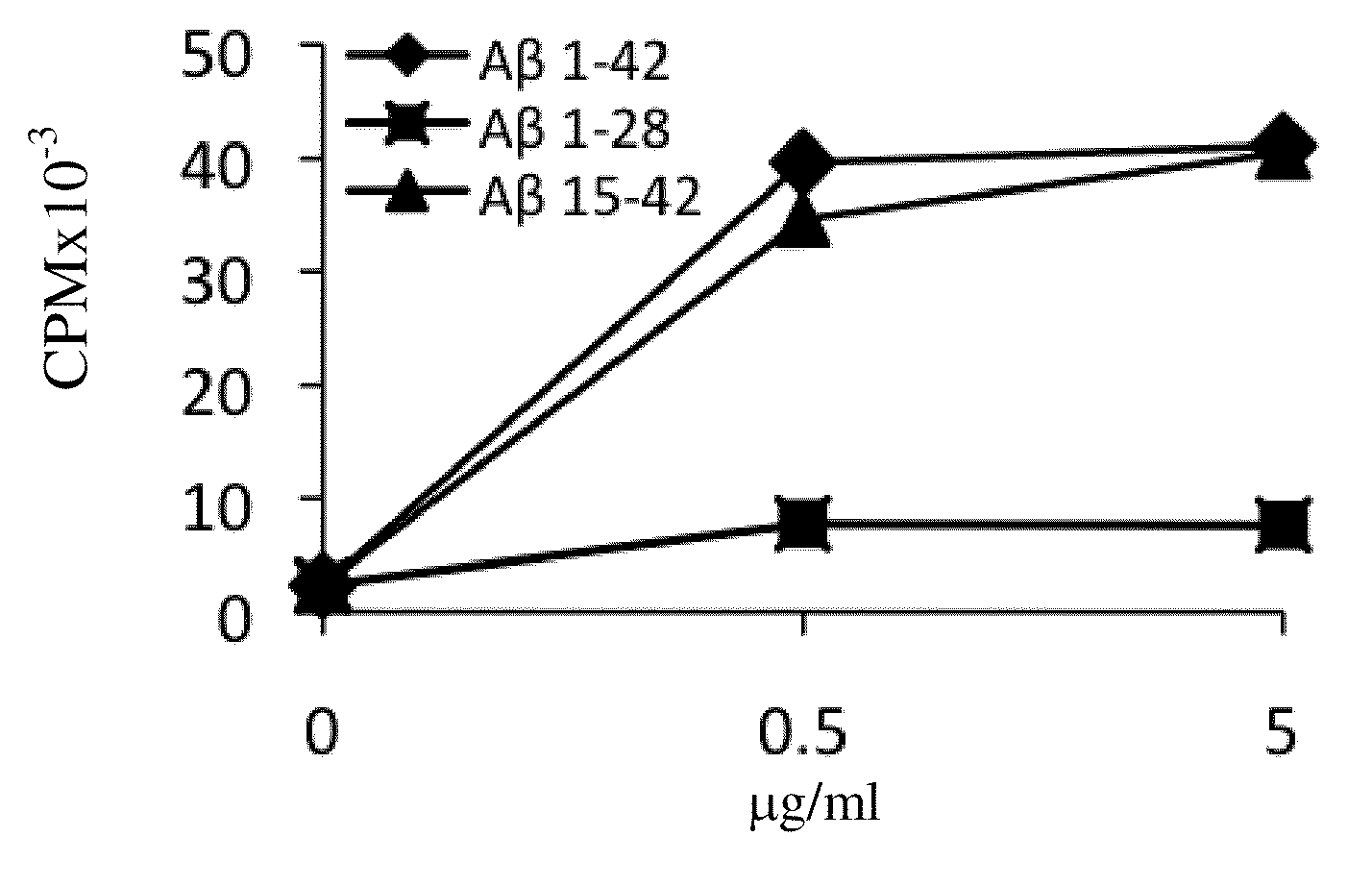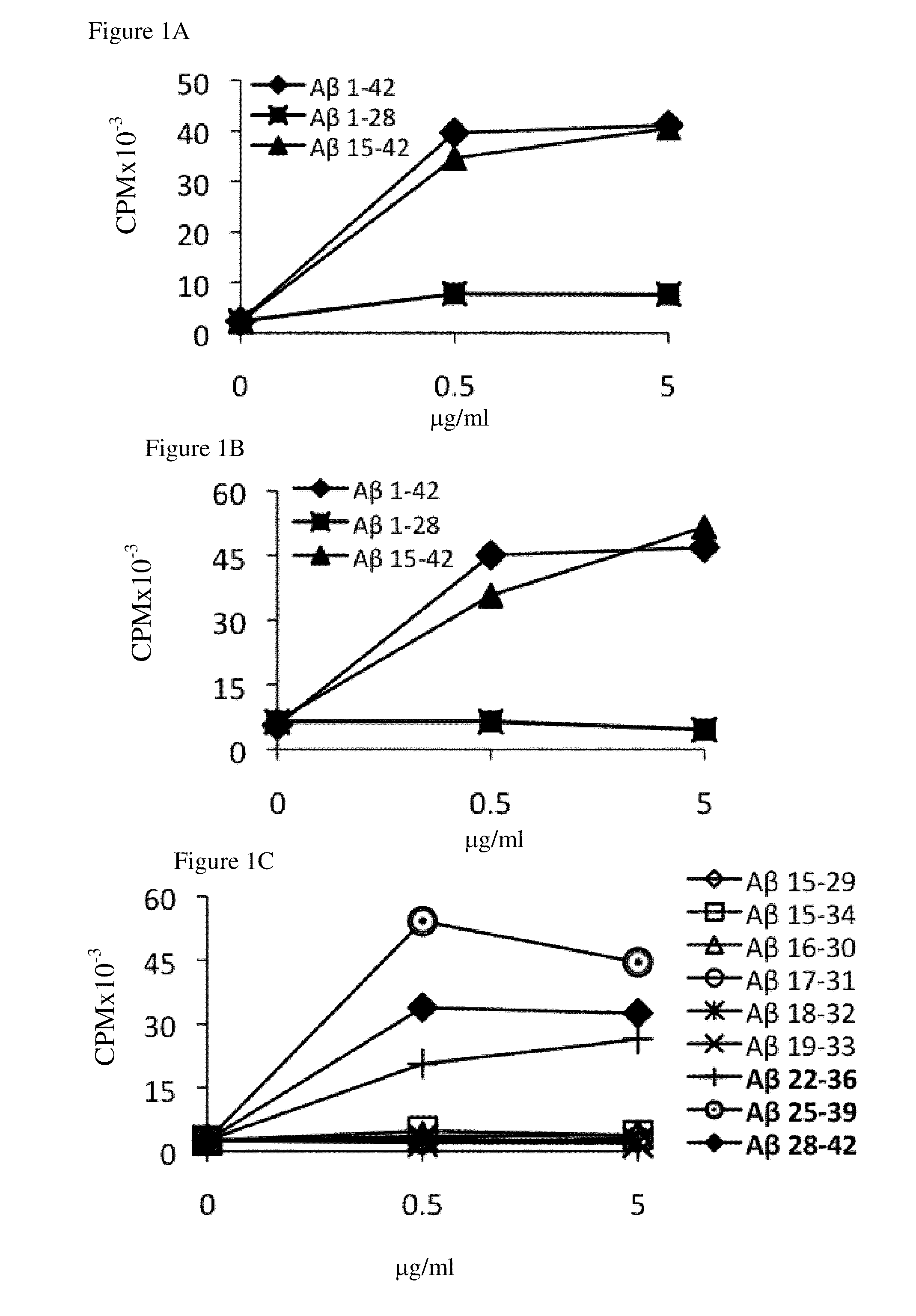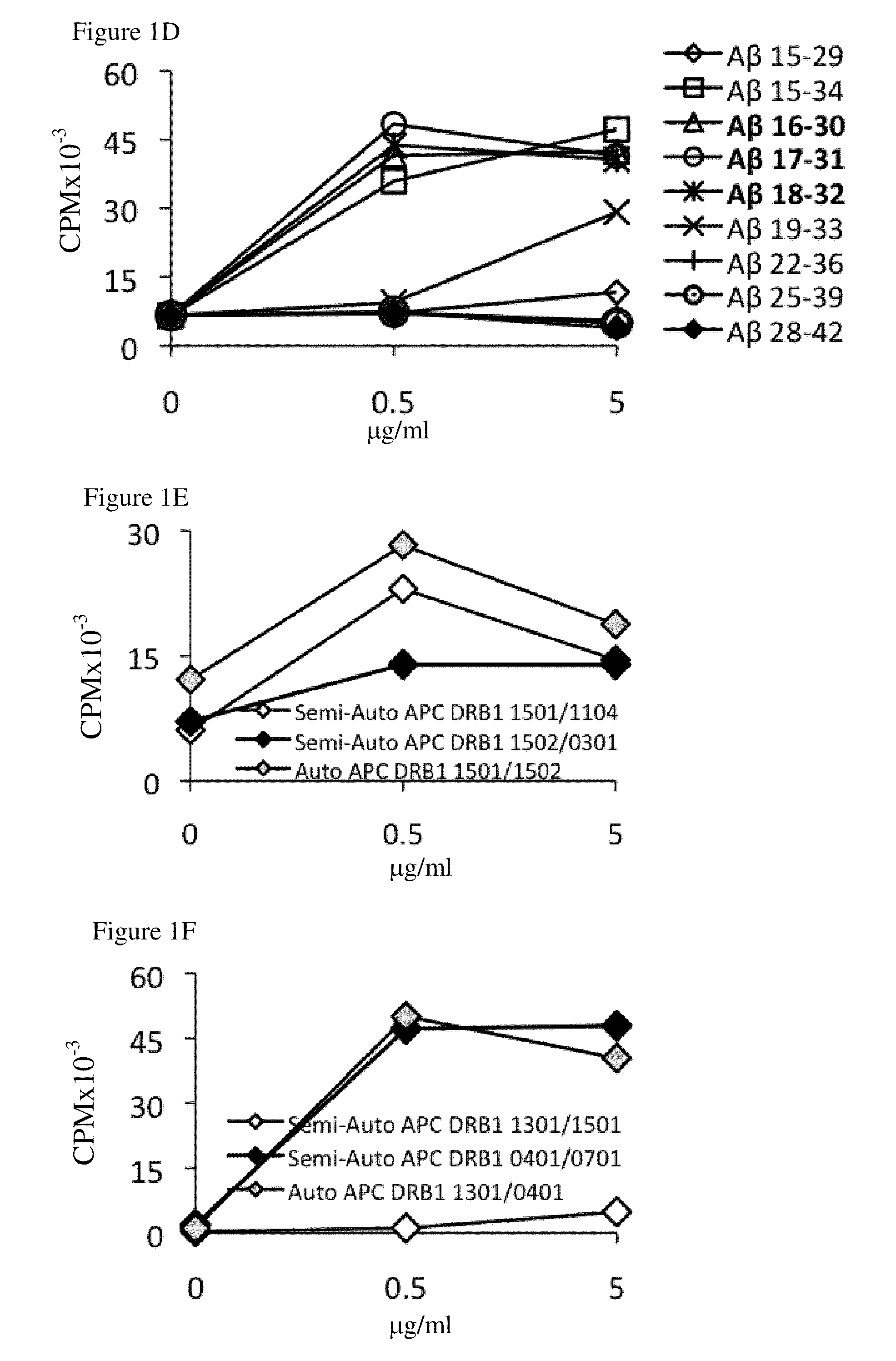Amyloid beta-peptides and methods of use thereof
- Summary
- Abstract
- Description
- Claims
- Application Information
AI Technical Summary
Benefits of technology
Problems solved by technology
Method used
Image
Examples
example 1
Epitope Specificity and HLA-DR Restriction of Aβ-Reactive T-Cell Lines
[0273]To identify the HLA-DR alleles that play a role in Aβ immunogenicity, Aβ-reactive T-cell lines were generated from the PBMCs of human subjects as described in Materials and Methods. These T cells were then restimulated with autologous or semi-autologous PBMCs (nonautologous PBMCs bearing one of the autologous DRB1 alleles) to determine their epitope specificity and identify their dominant epitope-presenting HLA-DR alleles. Overall, the PBMCs of 89 of the 133 individuals analyzed in this study yielded positive Aβ-reactive T-cell responses in the split-well assay as described in Materials and Methods and our previous publication ((2003). J Clin Invest 112:415-422). From these 89 PBMC samples, 39 Aβ-reactive T-cell lines were successfully generated and were analyzed for epitope specificity and HLA-DR allele restriction, as shown in FIG. 1. Table 2 lists the HLA-DR alleles whose expression by PBMCs was essential...
example 2
[0280]AβT-cell epitopes in HLA-DR15 and HLA-DR4 humanized mice To confirm the above data on Aβ epitope specificity obtained for human Aβ-reactive T-cell lines and their restriction to specific HLA-DR alleles humanized mouse models expressing the DRB1*1501 (DR15) and DRB1*0401 (DR4) genes of the DR15 and DR4 haplotypes, respectively were used. DR15 and DR4 Tg mice were immunized with Aβ1-42 emulsified in CFA. To increase the frequency of Aβ-reactive T cells in the spleen, and hence the proliferative response to the various Aβ peptides, mice were also given a subsequent booster injection of Aβ1-42 emulsified in IFA. The mice were killed 18 days later and their spleens were analyzed for Aβ-specific T-cell proliferation as described in Materials and Methods. For this analysis we first used increasing amounts of Aβ1-42 peptide, the C-terminal fragment Aβ15-42, and the N-terminal fragment Aβ1-28. In mice bearing the DRB1*1501 allele, the first two promoted strong T-cell proliferation, whe...
example 3
T-Cell and B-Cell Responses Elicited in Aβ-Immunized APP / DR15 Tg Mice
[0281]To identify the isotypes of Aβ antibodies produced in DR15 Tg mice, 2-month-old mice were vaccinated with Aβ1-42 emulsified in CFA, followed by two booster injections of Aβ1-42 emulsified in WA at 2-week intervals. The different isotypes of Aβ-specific antibodies produced in serum samples 2 weeks after the last immunization were measured as described in Materials and Methods. As shown in FIG. 3A, Aβ immunization resulted in the production mainly of IgG1 specific antibodies, with significantly less production of IgG2c, IgG2b, IgG3, and IgM. No specific binding to OVA was observed for the various antibody isotypes (FIG. 3A). As reported for other mouse strains (20, 25, 26), sera bound to Aβ1-42-coated wells also bound to wells coated with Aβ1-15 but not with Aβ15-42 (FIG. 3B).
PUM
| Property | Measurement | Unit |
|---|---|---|
| Composition | aaaaa | aaaaa |
| Level | aaaaa | aaaaa |
Abstract
Description
Claims
Application Information
 Login to View More
Login to View More - R&D
- Intellectual Property
- Life Sciences
- Materials
- Tech Scout
- Unparalleled Data Quality
- Higher Quality Content
- 60% Fewer Hallucinations
Browse by: Latest US Patents, China's latest patents, Technical Efficacy Thesaurus, Application Domain, Technology Topic, Popular Technical Reports.
© 2025 PatSnap. All rights reserved.Legal|Privacy policy|Modern Slavery Act Transparency Statement|Sitemap|About US| Contact US: help@patsnap.com



